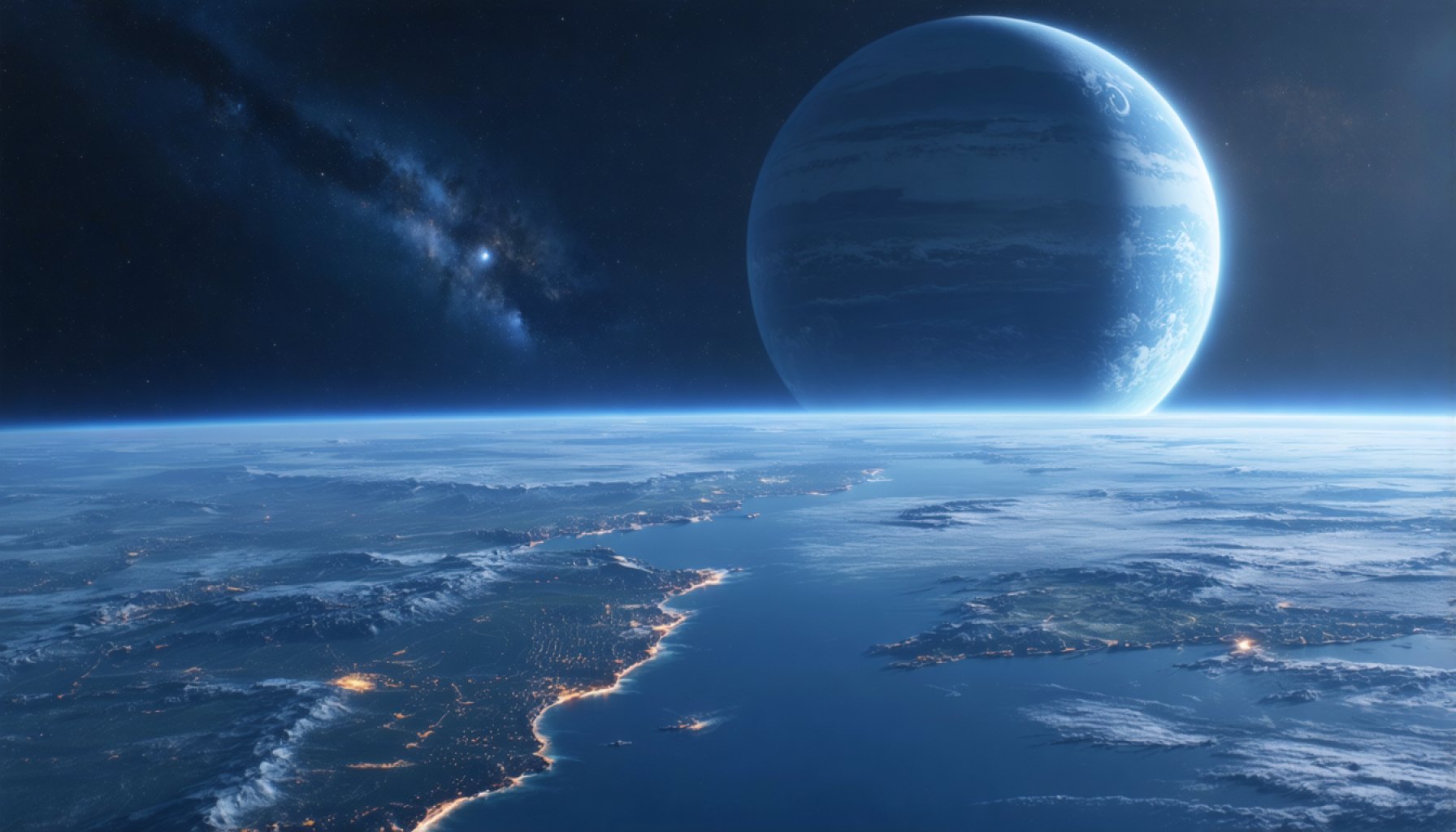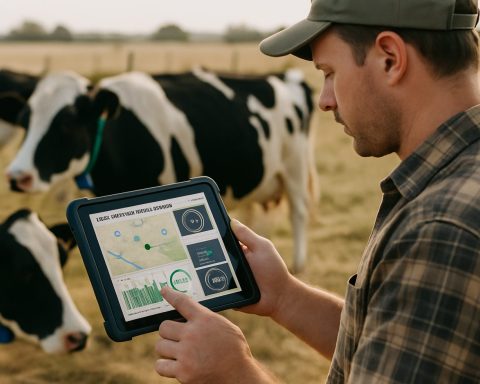- K2-18b, an exoplanet in the Leo constellation, is located in the “Goldilocks zone” and could harbor liquid water, making it a candidate for supporting life.
- The James Webb Space Telescope (JWST) has detected sulfur-based gases like dimethyl sulfide (DMS) and dimethyl disulfide (DMDS) in K2-18b’s atmosphere, suggesting possible biological activity.
- DMS and DMDS are associated with life on Earth, primarily produced by marine phytoplankton, indicating a potential oceanic ecosystem on this Hycean planet.
- JWST uses transit spectroscopy to identify chemical “fingerprints” in the planet’s atmosphere, shedding light on its composition with great precision.
- Current findings are at a three-sigma level, requiring further investigation to reach the five-sigma certainty needed for definitive claims of extraterrestrial life.
- The discovery raises hopes and questions about the existence of life beyond Earth, hinting at a potentially living universe awaiting exploration.
In a universe filled with billions of stars and even more mysteries, a humble exoplanet named K2-18b is igniting humanity’s imagination. Thanks to the remarkable vision of NASA’s James Webb Space Telescope (JWST), scientists have glimpsed what might be the most compelling evidence of life beyond Earth—a planet more than 120 light years away, drenched in mystery and oceanic allure.
K2-18b lurks in the expansive Leo constellation, orbiting a red dwarf star in what astronomers call the “Goldilocks zone”—not too hot, not too cold, just right for liquid water, the essential cauldron of life. This celestial body, akin to a giant Earth, is classified as a “Hycean planet,” possessing vast oceans beneath its hydrogen-rich skies, a perfect petri dish for marine life to possibly emerge.
Intriguingly, the telescope has discovered a cornucopia of sulfur-based gases, namely dimethyl sulfide (DMS) and dimethyl disulfide (DMDS). These molecules are rare architects of life, with their major producer on Earth being marine phytoplankton. Their astounding presence in K2-18b’s atmosphere suggests biological processes could be at play on this alien world, fueling the notion of teeming microbial life.
On Earth, DMS lingers at barely a whisper, approximately one part per billion by volume, yet on K2-18b, these levels soar to dizzying heights, hinting at a vibrant biological orchestra. Scientists like Professor Nikku Madhusudhan from the University of Cambridge describe this as a scenario brimming with potential life—a Hycean world with a thriving ocean ecosystem.
The methods employed by JWST are awe-inspiring in their precision and creativity. Utilizing transit spectroscopy, this cosmic sentinel captures starlight that filters through the planet’s atmosphere during its orbit. This light, carrying subtle chemical “fingerprints,” is unraveled by JWST’s instruments, revealing the presence of these life-associated gases with remarkable accuracy.
However, grounded in the tradition of cautious optimism, the scientific community tempers its enthusiasm until evidence reaches a rigorous five-sigma level of statistical certainty. For now, the current findings hover at a respectable three-sigma level. To solidify the claim, more sleuthing by the JWST is required—a task demanding time and patience.
Despite this careful restraint, the prospect of a living universe feels tantalizingly close. The dawn of a new era in cosmic exploration could soon be upon us, marking the discovery of life’s sartorial threads woven into the fabric of the universe. As we inch ever closer to unlocking these celestial secrets, each photon of starlight decoded brings us one step nearer to understanding whether life is an Earthly quirk or a cosmic inevitability.
As scientists continue to decode the messages carried across light years by the light from other worlds, the question of “Are we alone?” seems to whisper back with an answer filled with possibilities. The sky, once a canvas of distant wonders, may now become a map guiding us to the galactic beacons of life yet to be discovered.
Does K2-18b Hold the Key to Alien Life? Latest Revelations
The Fascinating World of K2-18b
K2-18b continues to capture the collective imagination of scientists and dreamers alike, sitting over 120 light years away in the Leo constellation. Its allure is largely due to its location in the “Goldilocks zone” of its red dwarf star—a region that might support liquid water and, therefore, life. This exoplanet adds a new chapter to the search for extraterrestrial life, hinting at what may exist beyond our imagination.
Delving Deeper into K2-18b: Facts and Innovations
Exoplanetary Classification and Composition
– Hycean Planet: K2-18b is classified as a “Hycean planet,” which describes exoplanets believed to have oceans beneath a hydrogen-rich atmosphere. This term combines “hydrogen” and “ocean” and is used to describe exoplanets that don’t fit the Earth-centric model of habitability but could nevertheless promote life.
– Atmospheric Chemistry: The presence of gases like dimethyl sulfide (DMS) and dimethyl disulfide (DMDS) are pivotal in the discussion about potential life. On Earth, these are primarily produced by marine phytoplankton, which opens up the possibility of similar biological organisms on K2-18b.
Technological Marvel: James Webb Space Telescope (JWST)
– Transit Spectroscopy: JWST uses this groundbreaking method to detect chemicals in exoplanet atmospheres by analyzing starlight that passes through the atmospheric layer. This method identifies chemical fingerprints, revealing the presence of gases linked to life.
– Precision and Potential: The telescope has already achieved a milestone by identifying these life-associated molecules with a three-sigma level of confidence, demanding higher accuracy for confirmed discoveries.
Pressing Questions About K2-18b
What Are the Implications of the Find?
The discovery suggests that life-supporting conditions might not be as unique to Earth as once thought, broadening the framework within which scientists search for extraterrestrial life. Understanding whether K2-18b harbors life could transform our grasp of life’s diversity and prevalence in the universe.
How Soon Will We Know for Sure?
While current observations provide promising evidence, the scientific community maintains cautious optimism. Achieving a five-sigma level of certainty, considered the gold standard in verifying such claims, will require more observations and technological advances.
Insights, Trends, and Predictions
Real-World Use Cases and Future Exploration
– Astrobiology and Space Missions: The potential discovery of life on K2-18b might catalyze astrobiology research and motivate the development of new space exploration technologies.
– Exoplanetary Studies: More Hycean planets might be identified and studied, radically shifting the course of planetary science and space exploration.
Market Trends and Industry Impact
The surge in interest in exoplanetary research is likely to influence funding and innovation in space science, potentially leading to increased investment in complementary technologies for data analysis and interstellar communication.
Actionable Recommendations and Tips
– Stay Informed: Keep updated with reputable sources like NASA for the latest discoveries about K2-18b and related space phenomena. Nasa
– Engage with Science Communities: Join discussions and forums focused on exoplanetary science to stay engaged with emerging theories and findings.
– Reflect and Imagine: Use this scientific milestone as an opportunity to ponder our place in the universe and the possibilities of life beyond Earth.
The universe forever expands with mysteries that challenge our understanding and inspire our quests for knowledge. K2-18b exemplifies how far we’ve come and how much further we have to explore.








